India is a country in which fashion is often made, crafted by thousands of embroiderers and weavers and seamstresses, but is yet to be considered a fashion capital on par with London, Milan and Paris. That is, until now. With international fashion brands flocking to India to stage blockbuster shows, open stores, curate exhibitions and tap into local craftsmanship, the focus has turned to the new generation of Indian designers, based in India rather than abroad, who are reframing their heritage and traditions through their own lens of fashion design. As varied and diverse as the country itself, their visions explore the nuances of their homeland. Some of them choose to show in Paris, while others are content building their brands on home turf. What they have in common is an inimitable sense of style, tradition and knowledge.
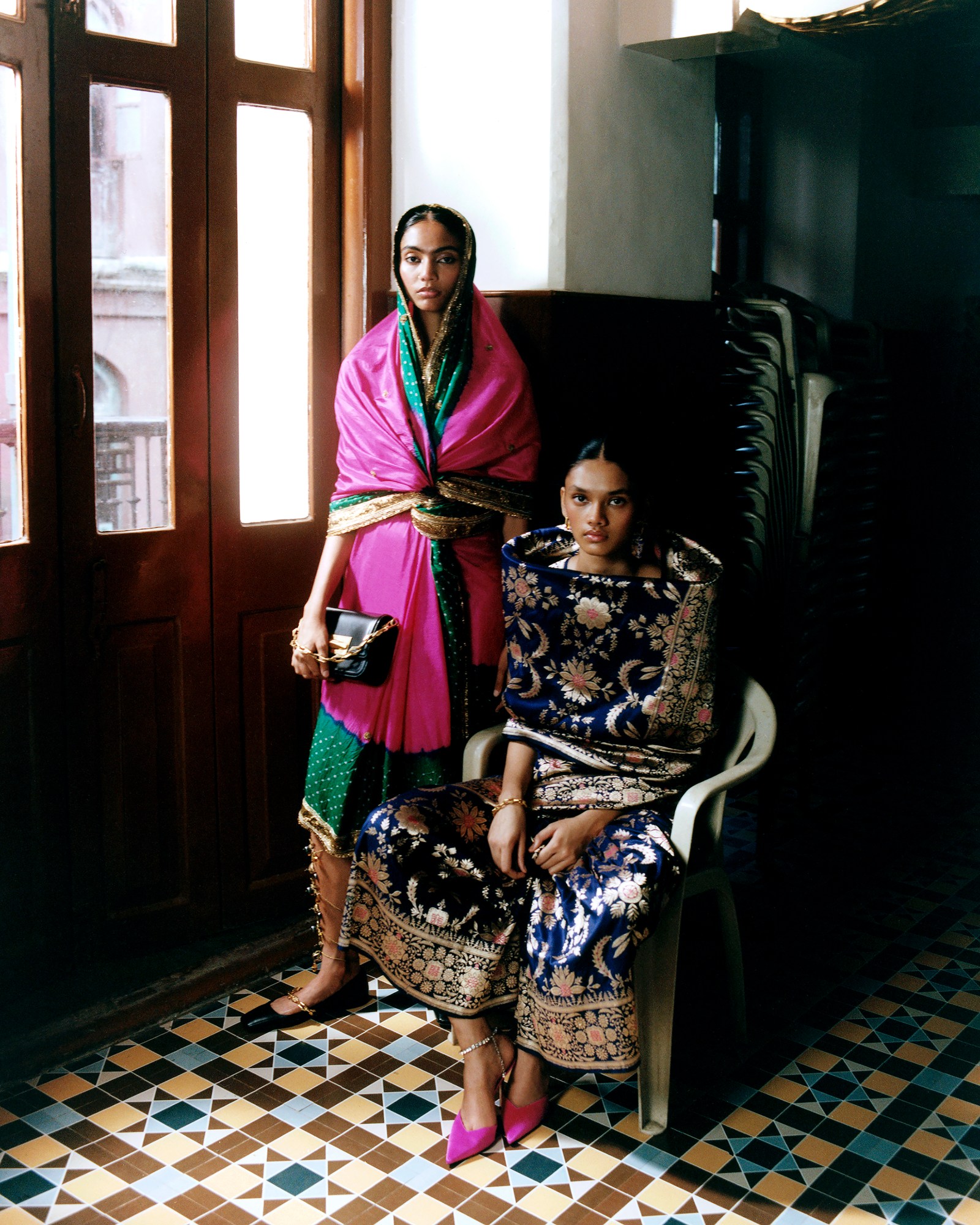
Of course, India has provided a backdrop — although often ornamentally – for Western fashion for centuries. Empress Josephine wore Kashmiri shawls, Verusckha posed in Hindu temples in the 60s — the era during which Diana Vreeland famously proclaimed that “pink is the navy blue of India” — and European designers have long trekked to the shores of Goa and the palaces of Rajasthan on “inspiration trips”, resulting in traditional motifs canonised throughout fashion history, as seen on traditional catwalks and in the pages of magazines. And yet — as far back as the seventeenth century — the lines between admiration, appropriation, exploitation, and celebration have often been blurred.
You only need to look at words like chintz, pyjamas, khaki, jodhpur, and bandana to know how much Western fashion has taken from India. Now, designers such as Gaurav Gupta, Rahul Mishra, Manish Arora, Raw Mango, Sabyasachi, Bodice, Bloni Atelier — and of course diasporic designers such as Supriya Lele, Grace Wales Bonner and Priya Ahluwalia — are aiming to shift the narrative, contributing to fashion while also broadening its horizons. Here, we caught up with three designers for whom India is not just a reference, but a home. Together, their work showcases the best of Indian craftsmanship and design — as showcased in a shoot shot on location in Mumbai by photographer Ashish Shah and stylist James Lalthanzuala, generously supported by Jimmy Choo. Why? Because the British brand was one of the first Western houses to open a boutique in Mumbai, and this year marks the opening of its second flagship in Mumbai, and its fifth in India.
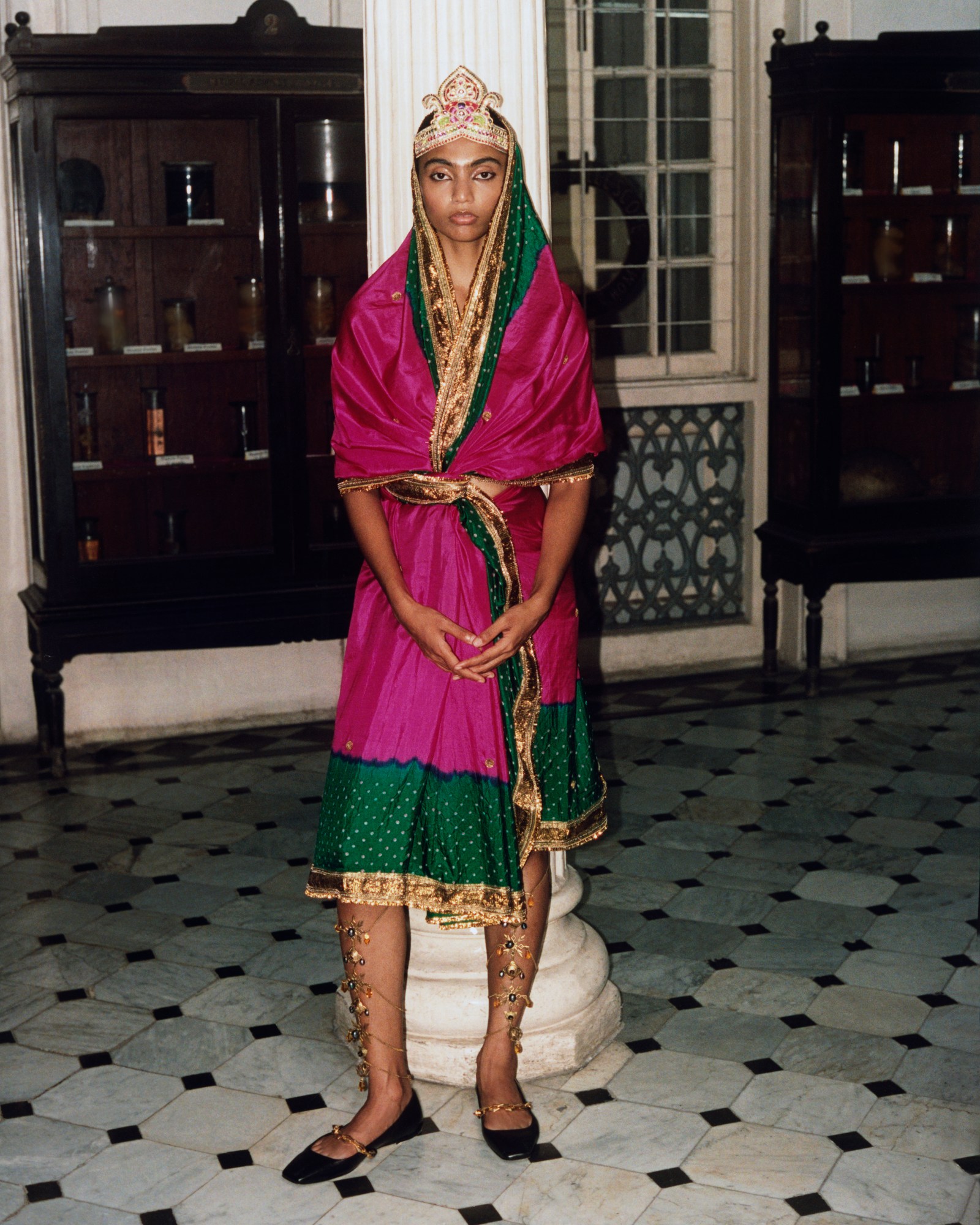
Raw Mango
Sanjay Garg is a self-described textile designer, rather than simply a fashion designer, and the founder of Raw Mango, the New Delhi-based label named after India’s national fruit. “In India, fashion is a borrowed word. It means something else for India – we need to identify what that is.” You could say that his 15-year-old brand has offered a constant exploration of that very question, reframing Indian history and traditions as a means of providing a thoroughly contemporary take on Indian style and culture, far from the kitschy stereotypes.
In fact, Sanjay describes his approach as “nation building” and, indeed, his fabrics form the basis of the myriad ways cloth can be draped into traditional and non-traditional sarees, and transformed into garments that are sometimes ornate, sometimes gossamer-light, and other times, fiercely sensual. In his spacious gallery-like stores in Delhi, Bombay, Chennai, and Hyderabad, piles of neatly-folded fabrics line the walls, sitting alongside kurtas, Fortuny-like plissé jackets, Varanasi brocade tailoring and tasteful displays of antiques and Art Deco design objects that speak to the rich sense of history that occupies the brand’s universe — here is history, sometimes tweaked and other times kept as untampered original.

“There is so much of a vacuum in India — our ratio of designers per capita is virtually non-existent,” Sanjay points out. “Design as a field is still very young, there are no legacy brands and that’s difficult because it’s a long road to get there, and to figure out a way.” He founded the label in 2008 with only four weavers in Chanderi in central India. Raw Mango is one of India’s most established brands, and the label now encompasses objects, film, sound, publications, events and spatial design. Often, the starting point for each project is a fragment of Indian history, such as the nineteenth-century Urdu opera, wildlife conservation in Ranthambore, bygone Parsi royalty, or Mughal and Rajputana art and architecture. Throughout his work, there is an emphasis on individuality on the way that textiles and garments can be worn; on one woman, it can be incendiary flashes of bare skin; on another, richly layered and protectively covered-up. “We draw from the colours, philosophies and cultures of India to create a voice, and perspective through design,” he adds.
At the heart of it all is what Sanjay describes as “innovation across all stages – from the yarn to the motifs, colours and weaves.” The locality is a pillar of the brand, with textiles commissioned by artisans, each of which specialises in specific crafts that vary from region to region. “I aspire to the ‘Zero Kilometre Design Philosophy’ which is very hard to execute,” Sanjay adds. “It also means that the focus needs to be on creating an impact that brings about development in the long run.” What does he see as the future of Indian fashion? “I am waiting for the Renaissance period to arrive in India,” he reflects. “India is one of the largest craft economies — the question now is: How does it continue to coexist in the evolving context of mechanisation?”
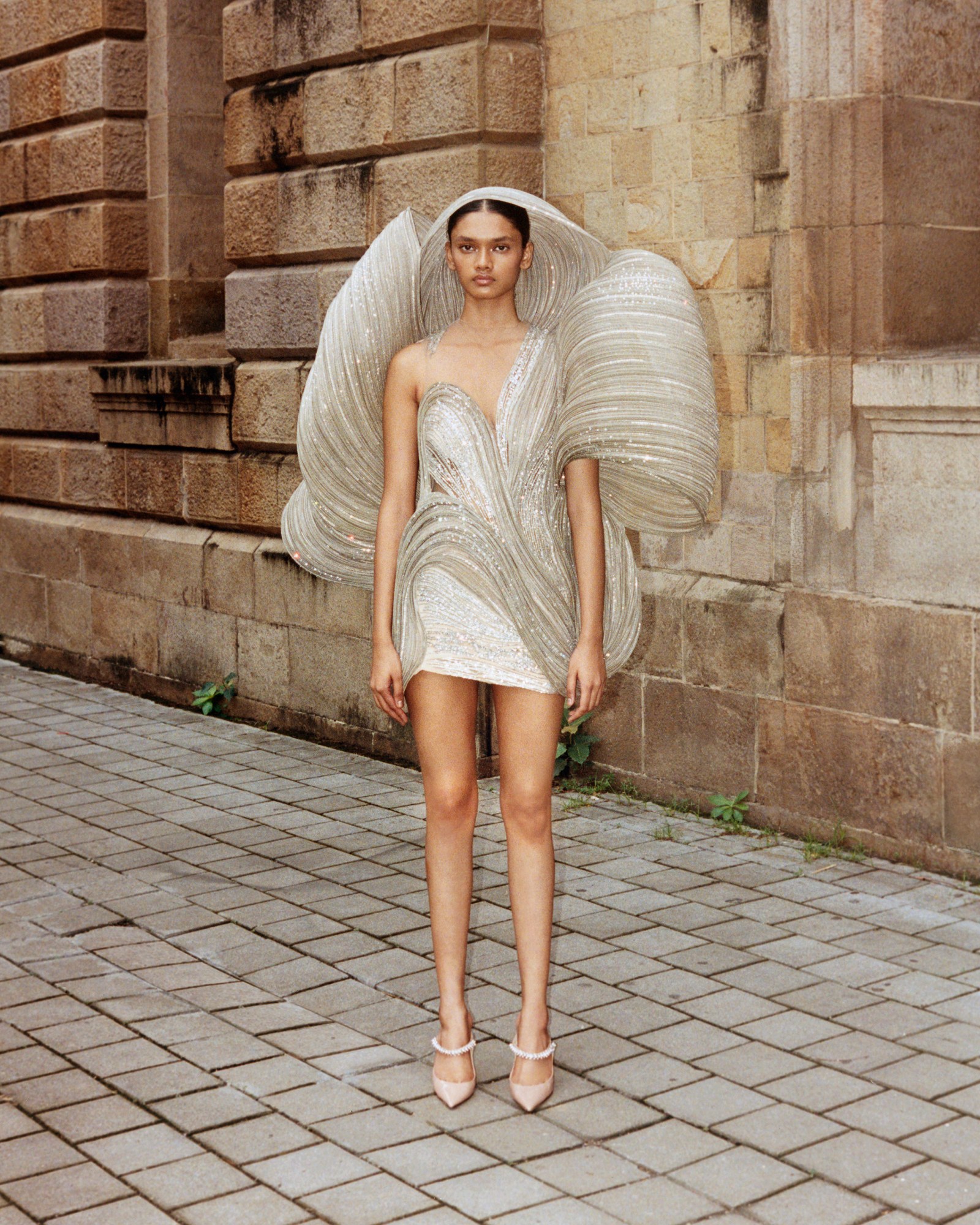
Gaurav Gupta
If you’ve kept your eye on the red carpets of the last couple of years, you will surely be familiar with the work of Gaurav Gupta. His sculptural surrealism-inspired designs have swirled around the bodies of Beyoncé, Cardi B, Priyanka Chopra, Mary J Blige and Lizzo, to name a few — and make no mistake, each of these stars are wearing one of the Delhi-based designer’s hyper-modern saris. Famous for his gowns that appear suspended in the air, with swoops of fabric extending over the shoulders and around the head, delicately embellished with beads and crystals that resemble cosmic constellations — each one draws on conceptual iterations of sari draping, sort of like futuristic sci-fi versions. “The evolution is in creating new forms and shapes and it’s still the fine balance of concept and commerce at the same time, and innovation,” explains Gaurav. “I love some of the ancient, traditional silhouettes of India— flared skirts and small blouses or the draping and saris — and we love to challenge it and take it in a new direction.”
Though his namesake fashion house celebrates two decades in business this year, 2023 has been a breakout year for Gaurav. He began the year with his first Paris couture show, hosted by the Chambre Syndicale de la Haute Couture (the French institution founded in 1868 that has since been the strict gatekeeper of haute couture). There was then Cardi B’s appearance at the Grammy’s in the designer’s custom cobalt gown, and Beyoncé donning not one, but two of Gaurav’s theatrical gowns on her Renaissance world tour.

Little wonder that, today, his company employs 600 people and has five freestanding stores. “The brand is expanding globally simultaneously, it’s getting a lot of global recognition too,” Guarav demurs. “It’s been a long road since graduating from both the National Institute of Fashion Technology in India, the top fashion school in the country, as well as Central Saint Martins in London, followed by stints under Hussein Chalayan and jobs in Japan, Turkey and Italy.
Gaurav hit his stride with science-inspired designs that look to India’s longstanding tradition of pioneering mathematicians, exploring the concepts of infinity and ‘Shunya (the Sanskrit word for zero) in his work. “Being an Indian in India and having that knowledge base of ancient Indian sciences is a part of my DNA, and a big advantage; science, metaphysics and spirituality are things I hold close to my heart.” Coupled with his army of artisans, the results are spellbinding and surpasses the craftsmanship of many Italian and French couture houses. “The advantages are that the kind of skill set available here is insane; it’s unmatched; the kind of workmanship one can do here in millions of different ways is mind-blowing, literally,” he adds. “Our artisans are able to develop new embroideries, fabrics, techniques at the atelier itself and are able to reinvent it over and over again. They have the right knowledge of Indian traditional crafts, but we have somehow managed to make our own craft out of it, giving it a new direction. It’s unboxed and limitless.”
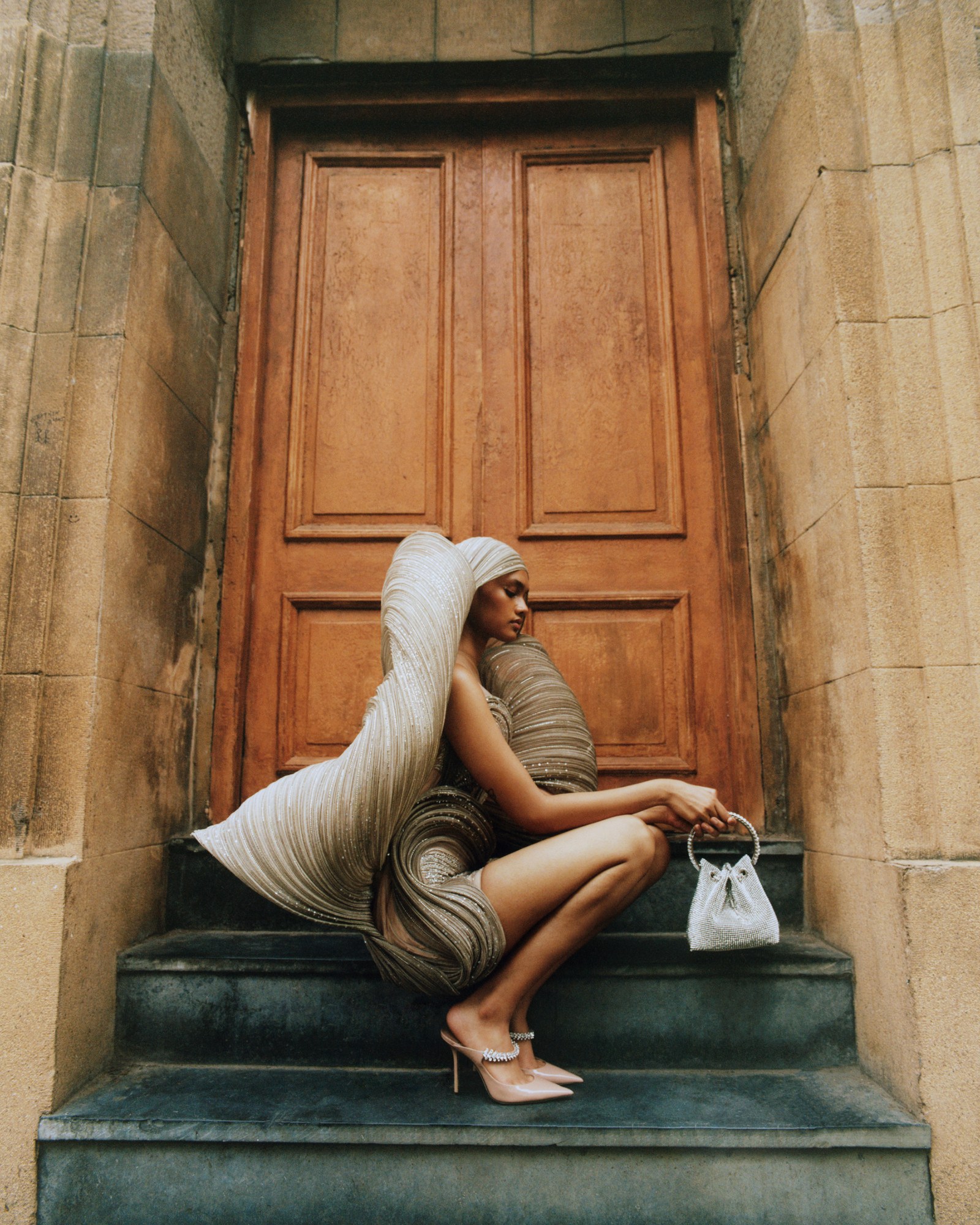
Gaurav’s ambitions are big: movies, physical spaces, and following in the footsteps of his fashion heroes, such as Vivienne Westwood, Thierry Mugler, Rei Kawakubo, Alexander McQueen and Yohji Yamamoto. However, as international as his horizons are, he remains firmly invested in the future of Indian fashion.
“India is its own tribe, its own planet, and it wouldn’t be fair for us to compare India to these countries especially since we are a new booming economy, he points out. “That’s why fashion will evolve now in India and the luxury of it will also evolve. I think what is super exciting for India is that the craft and fashion actually comes together more prominently and cohesively than any of the traditional fashion capitals.”

Bloni Atelier
If you thought that Indian fashion is just about ornately embroidered fabrics and yards of hand-woven silks and muslins, Akshat Bansal of Bloni Atelier is here to prove you wrong. The designer’s mission is to amalgamate traditional craft with technology, harmoniously blending high-tech fabrics like marine plastics and reflective chainmail with the traditional materials and silhouettes that he grew up surrounded by in his father’s thriving sari shop in Hisar. What could be more futuristic than that? Well, from the label’s start in 2017, Akshat is on a mission to make it all gender-fluid, size-inclusive and, of course, locally crafted in a bid to propel fashion towards a more progressive future. “India is a land where there is an abundance of craft and creativity,” Akshat explains. “It compels you to do so much when there is so much around you. The idea is to understand the resources that we have — different spices, colours, languages, weathers.”
Having cut his teeth with an apprenticeship on the legendary Savile Row in London while studying at Central Saint Martins, and even before that, a stint at the master ateliers of Indian couture maestro Tarun Tahiliani — Akshat is well-versed in how to make his designs work for different kinds of bodies and genders, namely through innovative pattern-cutting and sewing techniques. “My very basic idea is to make clothes that go beyond definitions of identity and gender, it is about a body and garment that have to co-depend on each other and I don’t want to stereotype that element. I don’t want to box a diverse LGBTQIA+ community to be spoken about in a way, on what kind of clothes they can wear — and I don’t want to be formulaically boxed in as an ‘Indian designer’, even if I love my country and I am proud to be here geographically.”
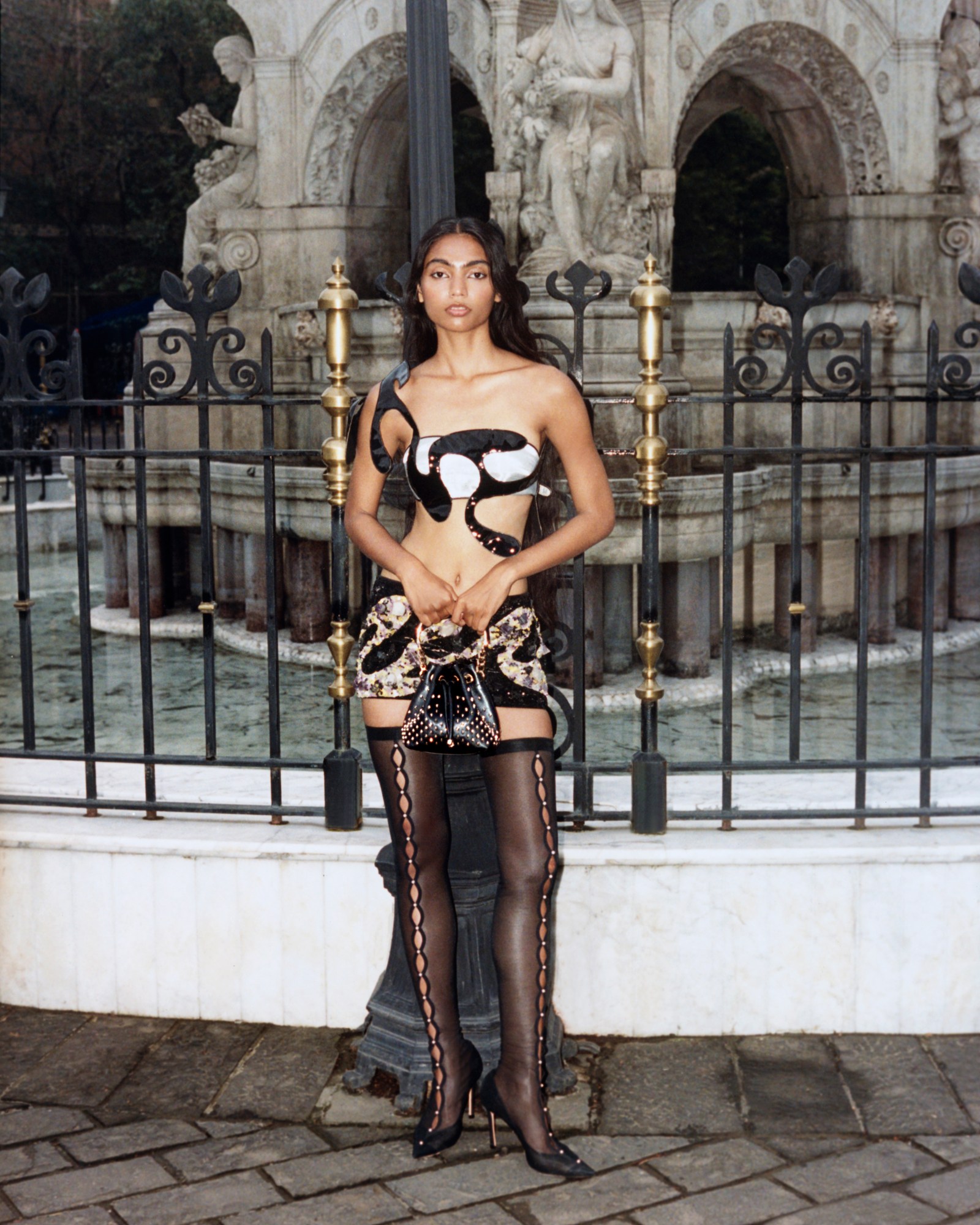
Quickly after launching, Bloni Atelier was showing at Lakmé Fashion Week in Bombay and debuting at Paris Fashion Week last year. Already, it has house signatures, such as the distinctive tie-dye motifs that appear on everything from second-skin jersey bodysuits to oversized tailoring and fluid dresses. “It was something that occurred to me quite naturally while on a trip to the Himalayas,” Akshat explains. “It’s abstractions using Indian traditional handicraft and dyeing techniques, and I want to see the tie-dye enhance and evolve, not to change the technique itself, but make it more contemporaneous.”
Key to his design philosophy is the pursuit of modernity within the structures of tradition as a means of challenging more-is-more Bollywood stereotypes. “What I wanted to create was a space to begin new cultural conversations, aid accessible exchanges,” Akshat adds, before asserting: “It’s not about opulence in India. It’s about who we are as Indians in a basic household, and I have always cherished this dynamic within it.”
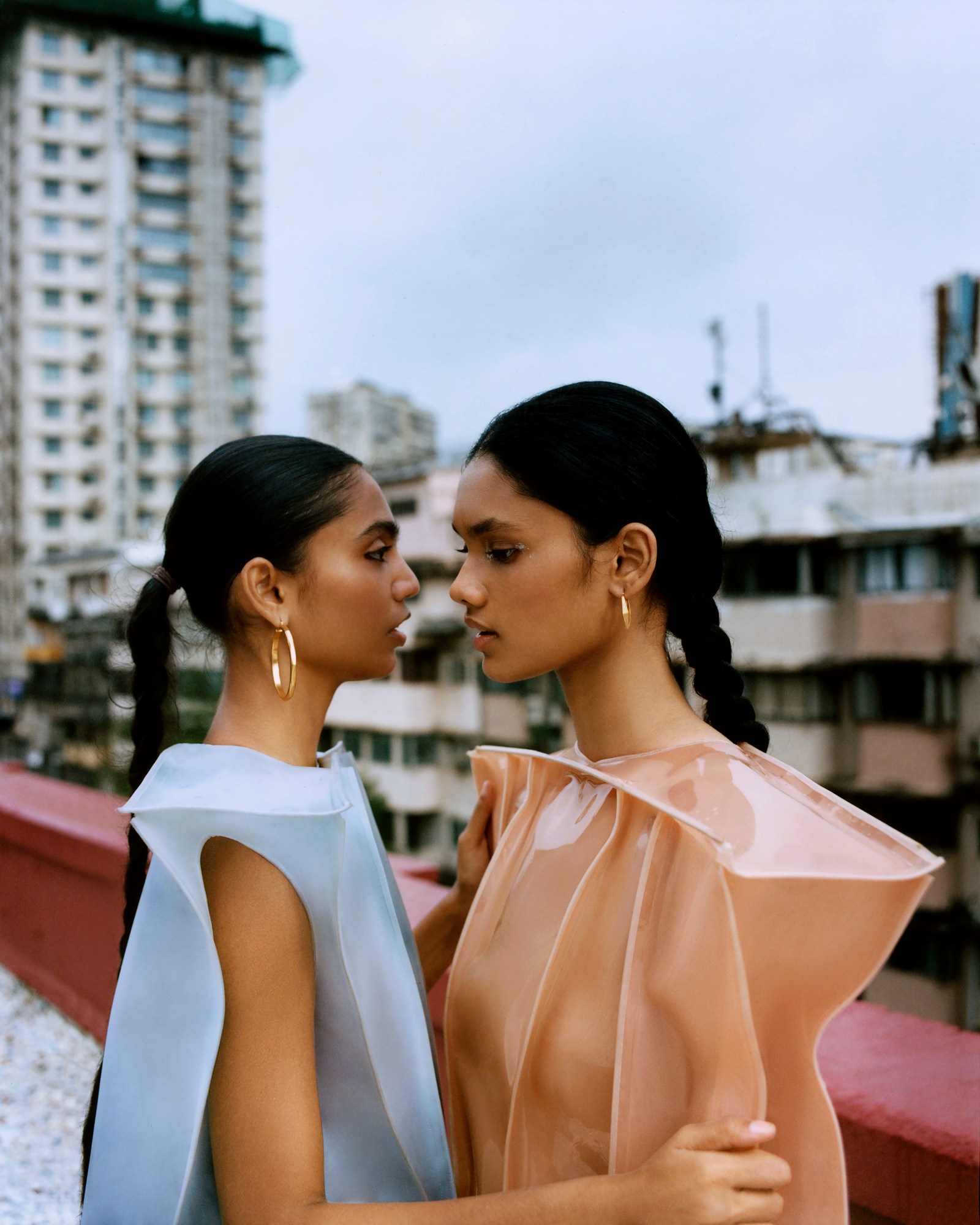
Credits
Photography Ashish Shah
Fashion James Lalthanzuala
Hair & Make-up Mitesh Rajani
Casting Feat Artists
Models Anugraha Natarajan, Nayonikaa Shetty at Feat Artists
Account Director Jenny Rose Kendrick
Associate Creative Director Alex LeRose
Executive Producer Elise Lebrun
Production Manager Gabriela Peneda
Local Production Imran Khatri Productions
Creative Production Smita Lasrado
All shoes (worn throughout) and select accessories by Jimmy Choo
